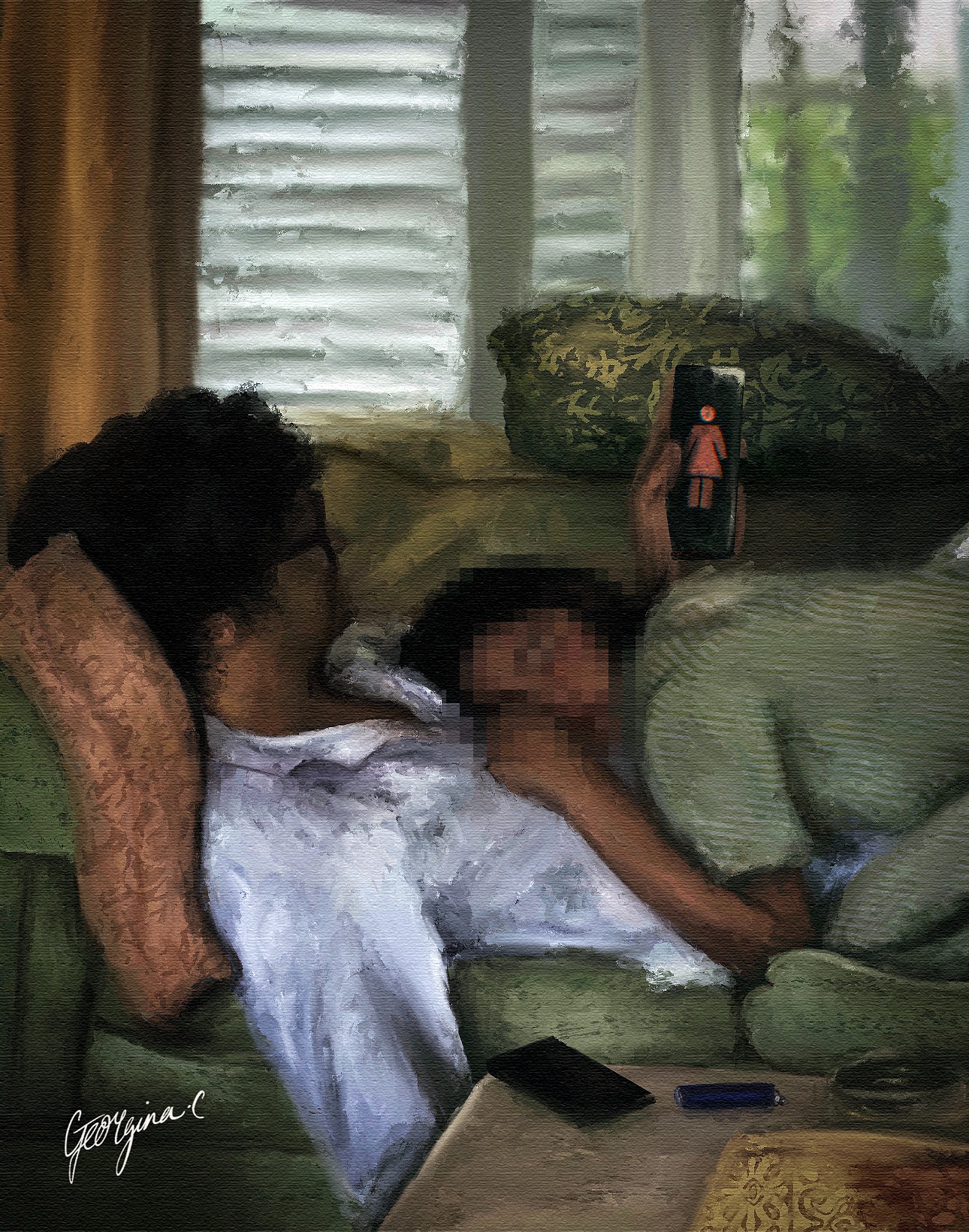
The Other Women (2023)
The Other Women (2023) examines intimacy, technology, and emotional distance within modern relationships. With Baroque-style lighting and psychological realism, Georgina M. Cox captures the quiet ache of connection interrupted by the presence of an unseen third.
⤷ When I painted The Other Women, I wanted to explore the quiet unease of emotional disconnection — the moments when intimacy feels occupied by something else. The work began as a study of light on skin and screens, but evolved into a reflection on how technology reshapes closeness, turning the private into something fractured.
The composition depicts a couple resting together on a sofa. At first, it feels tender, even ordinary, domestic calm framed in soft afternoon light. But the longer you look, the more the tension unfolds. One figure holds up a phone displaying an icon of a woman, its glow cutting sharply through the warmth of the room. It becomes both a symbol and a presence: the “other woman” who exists not in body but in attention.
The title plays deliberately with plurality. It’s not necessarily about infidelity, but about multiplicity, how screens, memories, and digital lives create layers of presence within a single relationship. The “other women” might be anyone, or even parts of the same person that no longer fit into the space of togetherness.
Light is used here as a psychological device rather than a decorative one. The Baroque chiaroscuro evokes intimacy but also confinement; the glow from the phone replaces the candlelight of older portraits, illuminating distance instead of devotion. The pixelated face of the reclining figure introduces a contemporary form of distortion, suggesting anonymity, fragmentation, or even erasure.
Thematically, The Other Women continues my exploration of intimacy and isolation in contemporary life. It questions what it means to be close to someone when so much of our emotional world exists through screens — how presence and absence can coexist in the same room.
Ultimately, this painting isn’t about betrayal so much as it is about longing. It’s about the ache of being half-seen, half-held, and the strange quiet that follows when love is shared with something invisible.
0 Comments Add a Comment?